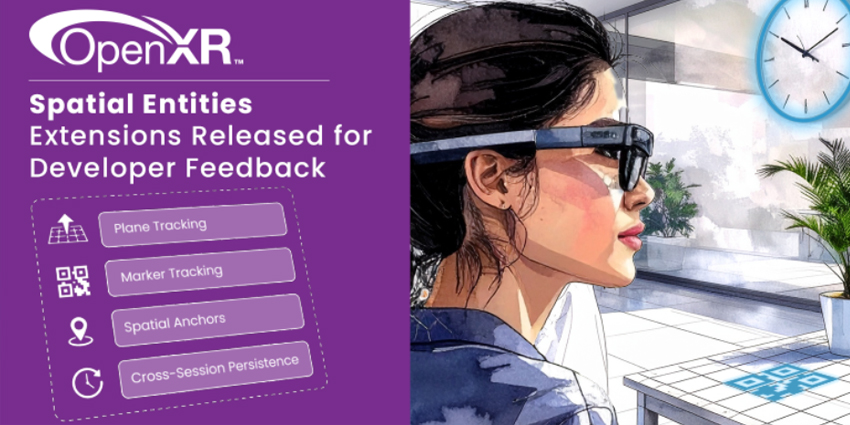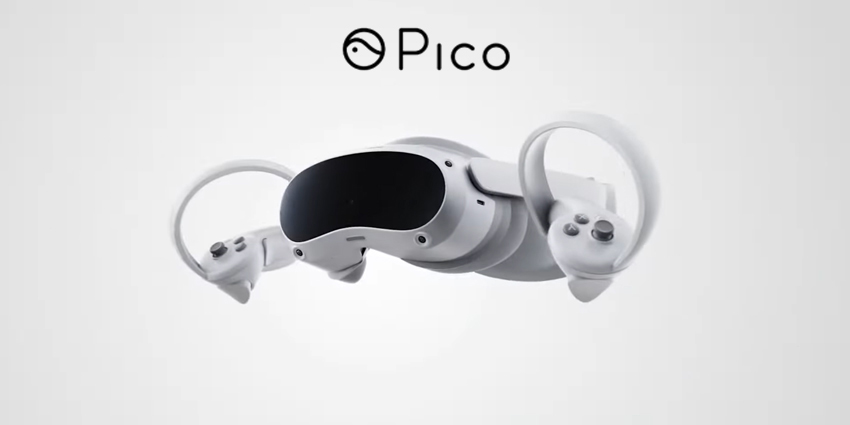Apple Vision Pro vs Meta Quest 3: Which is the best headset?
Both options have been available to the public for a little while now, and both have made quite an impact on consumers. After testing both of these headsets, it’s easy to see why.
The Meta Quest 3 is easily the best headset Meta has created so far—not just when compared to the previous Quest 2. It even has an edge over the Quest Pro in some areas.
Apple’s proprietary XR headset is revolutionary in its own way, introducing us to a new era of “spatial computing.” But with its hefty price tag, it’s not as accessible as the Quest 3 for most people.
Still, pricing aside, which headset is worth investing in, and why?
I put the two devices head-to-head to give you my honest opinion.
Apple Vision Pro vs Meta Quest 3: Our Quick Verdict
The Apple Vision Pro feels like the beginning of a new era for mixed reality headsets. It’s one of the most powerful devices I’ve ever used, with exceptional multi-tasking capabilities, hand and eye-tracking, and phenomenal visual fidelity.
The Meta Quest 3, on the other hand, isn’t quite as mind-blowing, but it’s definitely the more affordable option for XR beginners. It’s also the slightly more ergonomic choice, although that hasn’t stopped countless consumers from wearing their Apple Vision Pro wherever and whenever possible.
Apple Vision Pro vs Meta Quest 3: What Users Are Saying
Before I compare Apple and Meta’s latest headsets, I thought I’d look at what other users thought, starting with Meta’s head, Mark Zuckerberg. A couple of weeks after the Apple Vision Pro was released, Zuckerberg shared his review.
Shockingly, he says the Quest 3 isn’t just better value; it’s the better product overall. This opinion is likely to be a bit biased, but Zuckerberg does make a good point about value for money. The Quest 3 is a lot cheaper and still competes with the Vision Pro in many ways.
Zuckerberg isn’t the only person who prefers the Quest 3, either. A poll conducted by 360Rumors found that 73% of people would rather use the Quest 3 over the Vision Pro.
Notably, though, the results could have something to do with the people surveyed. I think the Meta Quest 3 will likely be more appealing to everyday consumers. However, the Vision Pro represents an incredible opportunity for professional teams. Not only is it better for everyday work (I’ll talk more about this below), but it also features apps for things like surgical training.
Apple Vision Pro vs Meta Quest 3: The Specs
Now let’s move onto my comparison of the Apple Vision Pro vs Meta Quest 3. First, it’s worth noting both companies define their headsets a little differently. Apple says the Vision Pro is a spatial computing system offering mixed-reality as-standard. The Meta Quest 3 is still being described as a “virtual reality headset.” However, it does provide mixed reality capabilities.
The Meta Quest 3 was recently updated to feature a new “Layout” system, which mimics some of the spatial computing features of Apple’s headset. Despite their massive difference in price, Meta and Apple’s headset share many similarities. Let’s look at the specs side-by-side.
| Meta Quest 3 | Apple Vision Pro | |
| Price | Starting at $499 | Starting at $3,499 |
| Display | LCD 2064 x 2208 pixels per eye at 120Hz | OLED 2160 x 3840 pixels per eye at 100HZ |
| Lenses | Pancake | Pancake |
| Processors | Qualcomm Snapdragon XR2 Gen 2 | Apple R1 and M2 |
| Controllers | Hand tracking, plus Touch Plus, controllers | Hand and eye tracking |
| RAM | 8GB | 16GB |
| Storage | 128GB and 512GB | 256GB, 512GB, 1TB |
| Weight | 513g | 600-650g |
| Battery life | 2-3 hours | 2-3 hours |
Apple Vision Pro vs Meta Quest 3: Pricing
Pricing is one area where the Meta Quest 3 has a clear edge over Apple. All of Meta’s headsets are usually reasonably affordable, making them more accessible to the masses.
The Meta Quest 3 is no exception, starting at a reasonable $499. In fact, I’d rank the Quest 3 as one of the best value affordable headsets out there. On the other hand, prices for the Apple Vision Pro start at $3,499. It’s pretty impressive that it sold out so quickly at that price.
Notably, it’s not just the Quest headset itself that’s cheaper. The accessories are more affordable, too. Even the carry cases for the Quest 3 start at $70 compared to Apple’s case costing around $199. The prescription lenses for the Quest 3 start at $50, too – half the price of the Zeiss lenses for reading and a third of the cost of prescription lenses for the Vision Pro.
Still, the Vision Pro is a more “premium” product overall. It feels and looks more expensive than the Meta Quest 3, which is probably why Apple isn’t struggling too much to make sales.
Apple Vision Pro vs Meta Quest 3: The Design
If I were rating the Quest 3 and Apple Vision Pro on looks alone, Apple’s headset would win. Its design is a lot sleeker and more futuristic. Plus, it comes with features Meta hasn’t been able to replicate. For instance, the 3D laminated glass can reflect an image of your eyes to the people around you. That might be a weird feature, but it’s still a differentiator.
As I noted in my Quest 3 review, the headset doesn’t look that different from any other Meta headset. You still get the white, plastic aesthetic and the chunky visor.
Still, looks aren’t everything, and the Quest 3 has an edge over the Vision Pro in terms of comfort, particularly regarding weight. I’ve commented on the Apple Vision Pro’s weight before. Though there are heavier headsets out there, the extra 20% heft compared to the Meta Quest 3 really does make a difference over time.
The Quest 3 balances weight more effectively on your head and ensures you can continue using it for longer periods. That being said, the strap isn’t the best. I’d advise upgrading to an Elite strap for a snugger fit if you can afford it.
The problem with the Vision Pro is that it’s not just heavier – it also carries all of its weight on the front due to the lack of a built-in battery. Even with an advanced headband (like the Dual Loop), wearing this headset after a while is exhausting.
One thing Apple does do a little better than Meta is tailor its headset to your face. You can upload a scan of your face to Apple’s store, and they’ll custom-fit the headset for you. They even recommend the right light shields for extra comfort. Still, this does mean you’ll have a harder time sharing your headset with friends and colleagues.
Meta vs Apple: The Displays and Audio
One thing that stood out in my Apple Vision Pro vs Meta Quest 3 experiment was the visual fidelity. The Quest 3 gives you a significant upgrade in visual performance. You get 2064 x 2206 pixels per eye at refresh rates up to 120Hz. Plus, even in passthrough mode, the Quest 3 delivers ten times more pixels than the Quest 2.
The Quest 3 even outshines the enterprise-grade Meta Quest Pro in visual performance, but it still struggles to compete with the Apple Vision Pro. With the Vision Pro, you get around a 4K level of fidelity per eye at a refresh rate of 100Hz.
I noted in my review of the Apple Vision Pro that the visuals are incredible. Even in passthrough, I found the Vision Pro offers much more clarity.
If I had only ever used Quest devices, the Quest 3 would be potentially mind-blowing, but it just feels mediocre in comparison to Apple’s ultra-rich experience.
From an audio perspective, Meta has upgraded its spatial audio to be more realistic, using a new HRTF model. This makes a difference in how sounds seem to be “positioned” around your head when interacting with the digital world.
Apple’s spatial experience is pretty impressive, too, with relatively solid and clear sounds and great positioning. Plus, you can easily communicate with colleagues through the six beamforming microphones. However, both headsets felt a little lacking to me in terms of overall volume and audio performance. There are more powerful options out there.
Apple Vision Pro vs Meta Quest 3: Extended Reality
Let’s move on to the feature that sets the Apple Vision Pro and Meta Quest 3 apart from other, earlier headsets: mixed reality. The Quest 3 offers a major upgrade to mixed reality experiences compared to the Quest 2, replacing black-and-white passthrough with full color (similar to the Meta Quest Pro). You can interact with the world around you relatively quickly.
However, I found the color camera quality slightly fuzzy and not exactly true to life. The Apple Vision Pro prioritizes mixed reality by default, so it’s little surprise that the cameras deliver much sharper, clearer images (despite a little motion blur).
Both headsets also support spatial videos. Apple’s headset can play 3D videos you’ve recorded either with your headset or iPhone 15 Pro, and they’re very immersive. The Quest 3 only added spatial video playback recently, but the visuals aren’t as great as what you’ll get from Apple. This might change if Meta starts creating its 3D cameras.
Controllers and Hand/Eye Tracking Functionality
One major difference between the extended reality experiences offered by Apple and Meta is the way they approach controls. While Apple allows you to connect external controllers and keyboards, the core experience is hands-free. The headset comes with five sensors for eye-tracking, 12 cameras, six microphones, and a range of other features to help you control content naturally.
Although the VisionOS operating system uses your real world as a baseline, you won’t be able to “position” apps and content in certain places.
That being said, interacting with content using the Apple Vision Pro feels intuitive and natural. Alternatively, the Quest 3 also has a range of sensors, such as four cameras on the front of the headset, 2 IR cameras, two peripheral cameras, and a depth projector.
However, the Quest 3 doesn’t support eye tracking, so you have less control when interacting with content hands-free. The eye and hand tracking on the Apple Vision Pro are phenomenal, whereas the hand tracking on the Quest 3 is a little unreliable.
Instead, you’ll be better off using the Plus controllers. The good news is that these controllers are much better than the ones included with previous headsets.
They’re more precise, more ergonomic, and they even have enhanced haptic feedback capabilities. Still, I think if you’re looking for a fully immersive experience, Apple’s hands-free approach is better overall. Meta may add full-body tracking capabilities later, however, which could give it an edge in this area.
Apple Vision Pro vs. Meta Quest Pro: Performance
Apple’s proprietary approach to developing its own chips and operating system for the Vision Pro certainly shines through in its performance. Though there are occasional bugs, such as issues getting Siri to listen to your voice, I didn’t encounter many problems with lag or latency.
The R1 and M2 processors in the headset offer exceptional, consistent performance, regardless of which apps you’re using. Plus, it’s worth noting that the Vision Pro excels at multi-tasking, which makes it a better tool for business users, in my opinion.
The Meta Quest 3, with its Snapdragon XR2 Gen 2 processor, is impressive, delivering 2.5 times the performance you’d get on the Quest 2. However, I encountered more issues with lag when using this headset. Notably, though, the Quest 3 is a little more flexible right now in terms of its overall ecosystem.
While the Apple Vision Pro works well with a range of existing apps and features like Facetime, it won’t work with your Apple Watch. Plus, you can’t interact with your iPad or iPhone screen in the same way you can your Mac device. This could be something Apple fixes in the future, of course.
The Quest 3 doesn’t have a holistic ecosystem for accessing Apple photos and messages, but it can work with a lot of different things, including your existing PC.
Software and Content
Previously, I would have given Meta the win here because Meta’s range of available apps for the Quest 3 is much bigger. However, Apple is making serious strides in this area, working with developers and innovators to introduce a wide range of new experiences.
The biggest difference for me is who the software and content available from both companies aim to support. Gaming is a little better on the Meta Quest 3 because so many entertainment-focused apps are available. However, watching videos and watching movies on Vision Pro is better.
Whether you’re watching flat, 3D, or spatial screens, the experience offered by Apple is exceptional. It even provides extra spatial features for things like Disney+.
Where the Apple Vision pro really shines is in terms of support for business users. First, the crisp micro-OLED displays make your projected MacBook screen look fantastic. Notably, while the Quest 3 can show you multiple screens simultaneously, compared to Apple’s single-screen focus, the Vision Pro is better at multi-tasking with apps.
You can open a range of iOS apps simultaneously while still accessing Siri and other services. There’s no limit to experimenting with things like Microsoft Office, Zoom, and Slack at the same time. Plus, I found communicating with colleagues on the Vision Pro much better, thanks to its powerful beamforming microphones.
Battery Life
Finally, we come to a bit of a stalemate in this Apple Vision Pro vs Meta Quest 3 review: battery life. Both companies claim that their headsets can offer between 2-3 hours of battery life as standalone headsets. Based on my tests, these claims are pretty accurate, depending on the apps you’re using.
The biggest problem with the Apple Vision Pro is that the battery pack is external. You need to charge this battery separately, connect it to your headset, and keep it in your pocket when interacting with the device. It all feels a little awkward overall.
The Quest 3 doesn’t have the same issue. You can simply pop the headset and controllers onto a charger and dive into mixed reality without wires getting in the way.
The Meta Quest 3 vs Apple Vision Pro: The Verdict
So, Apple Vision Pro vs Meta Quest 3: Which is best?
Despite Zuckerberg’s claims, I believe the Vision Pro is the better headset overall, particularly for business users. It offers better visual fidelity, stronger tracking capabilities, enhanced performance, and a sleeker design.
The Quest 3 has some winning points, such as a lightweight, more ergonomic experience for long-term use, a bigger app store for gamers, and a smaller price tag.
Overall, I’d recommend:
- The Apple Vision Pro: For business users looking for a next-level mixed reality experience, with cutting-edge spatial computing features, and great visual clarity.
- The Meta Quest 3: For everyday consumers, in search of comfort, affordability, ease of use, and a wide range of gaming apps.







